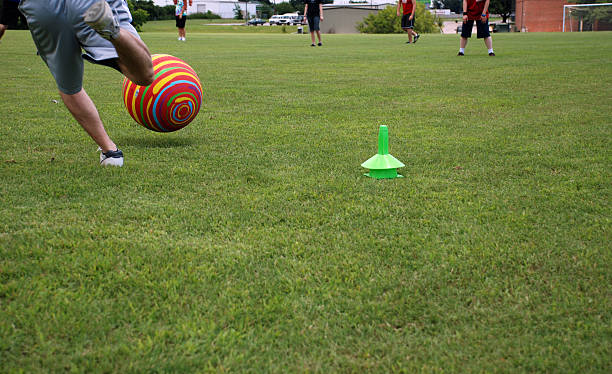General Rules of Skiing
As you hit the slopes, remember: safety is paramount in the world of skiing. But what other key rules should you be aware of to ensure a smooth and enjoyable experience? Strap on your gear correctly and keep an eye out for trail markings guiding your way. However, there's more to it than just that. Stay tuned to discover the essential guidelines that every skier should follow to navigate the snowy terrain with ease and confidence.
Safety First
When skiing, always remember to prioritize safety above all else. Helmet safety is crucial in injury prevention on the slopes. Make sure your helmet fits properly, snug but not too tight, with no obstructions to your vision. Replace your helmet if it has been involved in a crash or is showing signs of damage. Remember, a helmet is only effective if worn correctly.
Understanding emergency procedures and mountain rescue protocols is essential. Familiarize yourself with the resort's emergency contact numbers and locations of first aid stations. If you witness or are involved in an accident, remain calm and assess the situation. Contact mountain rescue immediately if needed, providing clear and precise details of the incident and location.
Gear Up Properly
To ensure your safety and optimal performance on the slopes, it is essential to gear up properly with the right equipment and attire. Proper attire plays a crucial role in keeping you warm, dry, and protected. Wear moisture-wicking base layers to keep sweat away from your skin, insulating layers to retain body heat, and waterproof, breathable outer layers to shield you from snow and wind. Don't forget your helmet, goggles, gloves, and appropriate socks to ensure comfort and safety.
Equipment maintenance is equally important. Before hitting the slopes, check your ski or snowboard bindings for proper adjustment, inspect your boots for any damage, and ensure your gear is in good condition. Regularly wax your skis or snowboard to maintain optimal performance and control. Keep an eye on the condition of your equipment and replace any worn-out parts promptly. By gearing up properly and maintaining your equipment, you can enjoy a safe and enjoyable skiing experience.
Understand Trail Markings
When hitting the slopes, understanding trail markings is crucial for a safe and enjoyable skiing experience. Trail difficulty levels are indicated by colors, with green being the easiest, blue intermediate, and black diamond the most challenging. Make sure to pay attention to trail signs, as they provide important information such as warnings about steep terrain or merging trails.
Trail Difficulty Levels
Understanding trail markings is crucial for skiers to navigate slopes safely and effectively. Trail difficulty levels are typically categorized into three main types: green circles for beginner slopes, blue squares for intermediate slopes, and black diamonds for advanced slopes. Below is a breakdown of what each trail difficulty level signifies:
| Trail Difficulty | Level Description | Level Symbol |
|---|---|---|
| Green Circle | Easy, beginner slopes | ◦ |
| Blue Square | Intermediate slopes | ▢ |
| Black Diamond | Advanced slopes | ♦ |
Knowing the trail difficulty levels will help you choose slopes that match your skill level, ensuring an enjoyable skiing experience while staying safe on the mountain.
Reading Trail Signs
Navigating ski slopes safely requires a keen awareness of trail markings, ensuring a smooth and enjoyable skiing experience. Identifying hazards is crucial for your safety. Look out for signs indicating steep terrain, cliffs, or avalanche-prone areas. These warnings help you avoid dangerous situations and stay on trails suitable for your skill level. When faced with obstacles, such as trees or rocks, pay attention to trail signs that provide guidance on navigating around them. Understanding these markers will enhance your ability to anticipate challenges and react appropriately. Always respect trail markings and follow their instructions to make the most of your skiing adventure while minimizing risks. By staying informed and alert, you can confidently tackle any slope.
Respect Right of Way
When skiing, remember to yield to downhill skiers and always stay in control. Following these rules ensures a safe and enjoyable experience for everyone on the slopes. Be mindful of your surroundings and prioritize safety at all times.
Yield to Downhill Skiers
To ensure safety on the slopes, always yield to downhill skiers and respect their right of way. Remember, maintaining proper etiquette when skiing contributes to slope safety awareness. Here are some key points to keep in mind:
- Be Alert: Stay aware of your surroundings to anticipate downhill skiers.
- Signal Your Intentions: Use clear signals to indicate your movements.
- Give Ample Space: Provide enough room for downhill skiers to pass safely.
- Avoid Abrupt Movements: Sudden changes in direction can startle others on the slope.
Stay in Control
As you ski, always maintain control to respect the right of way of others on the slopes. To ensure a safe and enjoyable skiing experience, it is crucial to maintain balance and avoid collisions with fellow skiers. Keep your speed in check, especially in crowded areas, and be prepared to adjust your course to prevent accidents. By staying in control of your movements and being mindful of those around you, you not only protect yourself but also show consideration for the well-being of others. Remember, skiing is a shared activity, and everyone on the slopes has the right to enjoy their time without unnecessary risks. So, carve your path confidently while staying alert and in control.
Stay in Control
Maintain proper balance and body positioning to ensure you remain in control while skiing. To stay in control on the slopes, focus on the following:
- Balance Control: Keep your weight evenly distributed between both skis and your knees slightly bent. This will help you navigate turns smoothly and react to changes in terrain effectively.
- Speed Management: Control your speed by making wide turns and using your edges to slow down when necessary. Avoid skiing too fast for your skill level.
- Posture: Maintain an upright posture with your arms forward and knees flexed, ready to absorb any bumps or obstacles in your path.
- Avoid Leaning Back: Leaning back can cause you to lose control, especially on steep slopes. Stay centered over your skis to maintain stability and control.
Be Aware of Surroundings
Ensure constant awareness of your surroundings while skiing to anticipate and react to changing conditions effectively. When engaging in activities like tree skiing or navigating through powder, it is crucial to be mindful of the obstacles and terrain around you. Additionally, understanding powder etiquette is essential for a smooth and enjoyable experience on the slopes.
| Key Points | Details |
|---|---|
| Tree skiing | Stay alert for trees and branches to avoid collisions. |
| Powder etiquette | Yield to the skier ahead to maintain a safe distance. |
| Off piste awareness | Be cautious of unmarked areas for hidden dangers. |
| Backcountry safety | Carry essential gear like a beacon and understand the risks involved. |
When skiing off-piste or in the backcountry, always prioritize safety. Familiarize yourself with the terrain, weather conditions, and potential hazards to make informed decisions. Remember, being aware of your surroundings not only enhances your skiing experience but also contributes to a safer adventure.
Follow Ski Area Rules
When skiing, always adhere to Ski Area Rules to ensure the safety of yourself and others. Uphill skiing must follow specific guidelines set by the ski area to prevent accidents. Remember to follow the Terrain Park Guidelines for a fun and safe experience on the slopes.
Ski Area Safety
To maximize safety while skiing, always adhere to the rules set by the ski area. Ski area safety is paramount for an enjoyable experience. Remember these key points:
- Stay on marked trails: Venturing off-piste can be dangerous.
- Respect mountain etiquette: Yield to others, and be aware of your surroundings.
- Educate yourself on avalanche safety: Be prepared in case of emergencies.
- Exercise caution in backcountry exploration: Always inform someone of your plans.
Uphill Skiing Rules
Adhere to the ski area's rules for uphill skiing to ensure a safe and enjoyable experience. When engaging in uphill skiing, proper equipment maintenance is crucial for a smooth ascent. Keep your skins well-tuned and your skis in top condition to prevent any unexpected issues on the slope. Uphill etiquette is key to a harmonious experience; yield to downhill skiers, stay to the side of the trail, and avoid disrupting the flow. Additionally, always prioritize avalanche safety by checking the conditions, carrying essential gear, and staying informed about the terrain. Proper skin care is also important to protect yourself from the elements. Refer to the table below for a quick overview:
| Uphill Skiing Rules | Key Points |
|---|---|
| Equipment Maintenance | Keep skins and skis in top shape |
| Skin Care | Protect your skin from harsh conditions |
| Uphill Etiquette | Yield to downhill skiers, stay to the side |
| Avalanche Safety | Check conditions, carry essential gear |
Terrain Park Guidelines
Ensure a smooth transition to discussing Terrain Park Guidelines by emphasizing the importance of following ski area rules for a safe and enjoyable experience. When hitting the terrain park, always remember to adhere to the designated rules to ensure a fun and safe session. Here are some key points to keep in mind:
- Practice Jumps: Start with smaller jumps to build your confidence and gradually progress to larger ones.
- Perfect Landings: Focus on landing softly with your knees bent to absorb the impact.
- Rail Tricks: Start with basic rail tricks and progress to more advanced ones as you improve.
- Creative Lines: Experiment with different combinations of features to create unique runs that showcase your style.
Know Your Limits
Knowing your limits is crucial for safe and enjoyable skiing experiences. As a skier, it is essential to understand your skills and challenge yourself accordingly. Pushing yourself beyond your capabilities can lead to accidents and injuries. Before hitting the slopes, take a moment to assess your skiing level honestly. Are you comfortable on blue runs, or do you struggle with them? Knowing this can help you choose suitable terrain to ski on.
While it's great to challenge yourself and improve your skills, it's equally important to recognize when to dial it back. If you feel overwhelmed or out of control on a particular slope, don't hesitate to move to an easier run. Skiing within your limits not only keeps you safe but also ensures you have a more enjoyable time on the mountain.
Communicate Effectively
To facilitate safe skiing experiences, effective communication among skiers on the slopes is imperative. When skiing, clear instructions and nonverbal signals can make a significant difference in ensuring everyone's safety. Here are some key points to consider:
- Nonverbal signals: Utilize hand gestures or signals agreed upon before skiing to communicate effectively with your group or other skiers around you.
- Safety precautions: Communicate any potential hazards or obstacles to fellow skiers to prevent accidents and ensure a smooth skiing experience.
- Clear instructions: Provide concise and straightforward directions to your skiing companions to avoid misunderstandings and promote a cohesive skiing environment.
- Emergency procedures: Establish emergency protocols in case of accidents or unexpected situations, and ensure everyone is aware of how to respond promptly and efficiently.
Leave No Trace
For maintaining the natural beauty of the skiing environment and preserving the wilderness, adhere to the principles of Leave No Trace. When skiing, it is crucial to leave no trace and minimize your environmental impact. Responsible skiing involves being mindful of the terrain you are traversing and the effects your actions can have on the ecosystem.
To practice Leave No Trace while skiing, stick to designated trails and avoid cutting new paths through untouched snow or vegetation. Stay on established routes to prevent soil erosion and damage to plant life. When taking breaks, choose durable surfaces like rocks or packed snow instead of fragile vegetation to minimize your footprint on the environment.
Additionally, make sure to pack out all your trash and waste, including food wrappers and tissues. Leaving behind litter not only spoils the natural beauty of the area but can also harm wildlife. By following the principles of Leave No Trace, you can enjoy the slopes while respecting and protecting the surrounding wilderness.
Frequently Asked Questions
What Should I Do if I Encounter Wildlife on the Slopes?
When you come across wildlife on the slopes, keep calm and give them space. Remember, safety first. Respecting mountain etiquette is crucial when encountering animals. Stay alert, maintain distance, and enjoy nature responsibly.
How Do I Handle Skiing in Changing Weather Conditions?
When skiing in changing weather conditions, layering techniques are crucial. Adjust equipment for visibility challenges. Prioritize safety precautions by being aware of your surroundings. Stay flexible and adapt as needed to ensure a safe and enjoyable skiing experience.
Are There Any Specific Rules for Skiing in Backcountry Areas?
When skiing in backcountry areas, remember the importance of avalanche safety precautions. Always carry essential gear and know emergency communication protocols. Prioritize safety and be prepared for any situation to enjoy your adventure fully.
What Should I Do if I Witness Someone Breaking Ski Area Rules?
If you witness someone breaking ski area rules, ensure safety first. Report the violation to ski patrol or staff immediately. Following safety protocol is crucial to maintain order and protect all skiers on the slopes.
How Can I Properly Maintain My Ski Equipment for Optimal Performance?
To ensure your ski gear performs like a finely tuned instrument, proper storage is key. Treat it with care, like a delicate flower that blossoms with regular tuning. Store in a dry, cool place.






